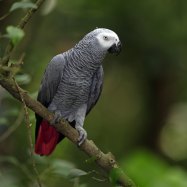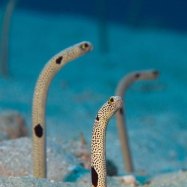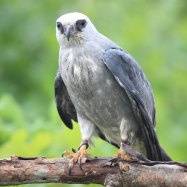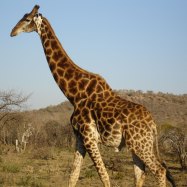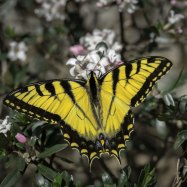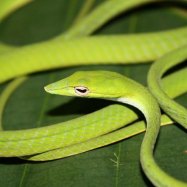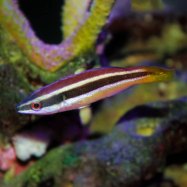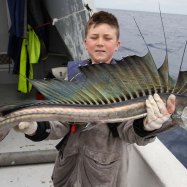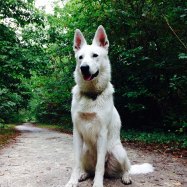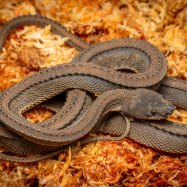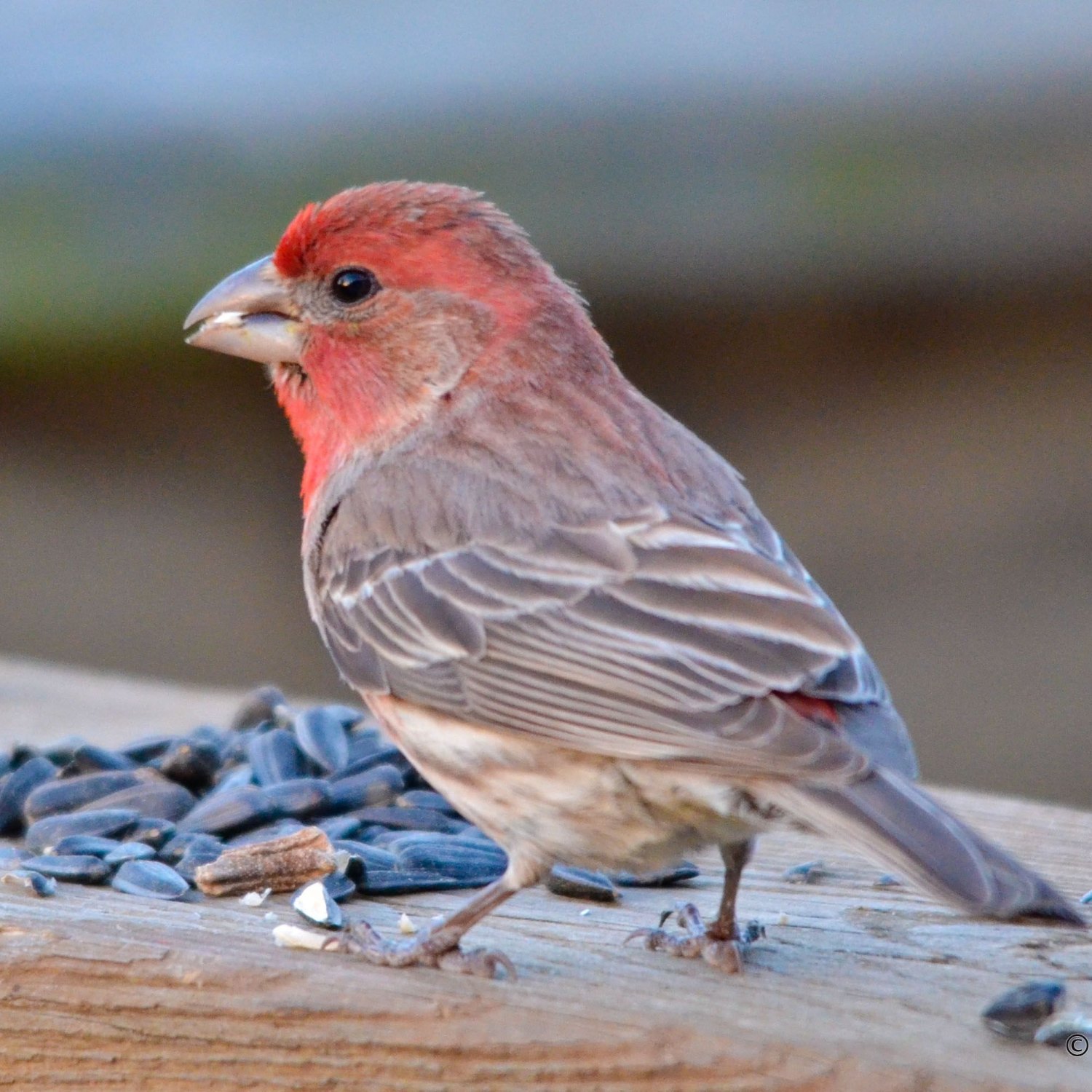
House Finch
12.5-15 cm (4.9-5.9 in)
The House Finch is a beautiful and common sight in backyards, gardens, and parks across North America. These small birds, part of the Fringillidae family, are easy to spot with their short, thick bills and slightly notched tails. They typically measure 12.5-15 cm (4.9-5.9 in) in length and are known for their melodious songs. Keep an eye out for these lovely creatures in your outdoor spaces! #HouseFinch #Fringillidae #BackyardBirds
Animal Details Summary:
Common Name: House Finch
Kingdom: Animalia
Habitat: Urban, suburban, and rural areas
The Vibrant and Adaptable House Finch: A Common Bird in North America
If you are a bird enthusiast or simply enjoy observing nature, chances are you have come across the charming House Finch. With its bright red head and breast (in males), brown back, and white belly, this small bird is a delight to watch. But there is much more to this feathered friend than meets the eye. In this article, we will take a closer look at the House Finch, its habitat, feeding habits, distribution, and other interesting facts that make it a remarkable bird House Finch.Origin and Taxonomy
Scientifically known as Haemorhous mexicanus, the House Finch belongs to the kingdom Animalia, phylum Chordata, class Aves, and order Passeriformes. It is a member of the Fringillidae family, which includes finches, sparrows, and other small seed-eating birds. The word Haemorhous is derived from the Greek words "haima," meaning blood, and "oros," meaning red, referring to the bird's vibrant red plumage. It was initially known as Carpodacus mexicanus but was later moved to the Haemorhous genus.Habitat and Distribution
The House Finch is a highly adaptable bird, able to live in a variety of habitats. It is prevalent in urban, suburban, and rural areas, making it a common sight in North America. Although it is believed to have originally been exclusive to the southwestern United States and Mexico, it has now spread to most parts of North America. Its range extends from southern Canada to northern Mexico, and it can also be found in Hawaii and Puerto Rico.Appearance
The House Finch is a small bird, measuring between 12 Holy Cross Frog.5-15 cm (4.9-5.9 in) in length. It has a compact body with a short, thick bill and a slightly notched tail. The males exhibit a striking coloration, with a bright red head and breast, brown upperparts, and a white belly. In contrast, the females are mostly brown with streaked underparts. However, some variations may occur, with females sometimes displaying a faint reddish tint.Feeding Habits
The House Finch is primarily a granivorous bird, feeding mainly on seeds. Its short, thick bill is well suited for cracking open the tough shells of various seeds, making it well adapted to survive in urban and rural environments where there is an abundance of seeds. They are often seen perched on seed feeders or foraging on the ground for fallen seeds. In addition to seeds, they also feed on insects, fruits, and berries, especially during the breeding season when they require more protein for egg-laying.Breeding and Reproduction
Male House Finches are known for their lively courtship displays, often seen singing, swaying, and fluttering their wings to attract females. They are polygynous, meaning that one male can mate with multiple females. Once a male has attracted a female, they will work together to build a nest using materials such as twigs, grass, and string. The female usually lays between 3-6 eggs, which she incubates for about 12-14 days. After hatching, both parents take turns feeding the chicks until they fledge, which usually happens at around 12-18 days. House Finches can have up to three broods per breeding season.Role in the Ecosystem
House Finches play an essential role in the ecosystem as seed dispersers. By foraging on a variety of plants, they aid in the dispersal of seeds and contribute to the growth and reproduction of plants. They also serve as food for predators like birds of prey, snakes, and cats, helping to maintain a balance in the food web.Threats and Conservation
The House Finch is not currently considered a threatened species. Its adaptable nature and wide distribution have enabled it to thrive in different environments. However, it has faced some threats in the past, notably the outbreak of a bacterial disease called Mycoplasmal conjunctivitis in the 1990s. This disease led to the deaths of many House Finches, but they have since developed resistance, and the population has recovered.How to Attract House Finches in Your Backyard
If you want to attract House Finches to your backyard, there are a few things you can do. Providing a variety of seeds in bird feeders is an excellent way to attract them, as they have a diverse diet. You can also leave dried fruits such as raisins in feeders or on the ground. Planting native plants that produce seeds and berries is another way to attract these colorful birds. It is essential to clean bird feeders regularly to prevent the spread of diseases.Fun Facts about House Finches
- The House Finch is also known as the Linnet, Hollywood Finch, and Hollywood Redhead.- During the breeding season, male House Finches often sing at night, sometimes keeping people awake with their loud and continuous singing.
- In the early 1940s, a few House Finches were kept in captivity and released in New York, which led to the rapid spread of the species throughout the eastern United States.
- The House Finch was initially a cage bird, prized for its beautiful song, and was considered a delicacy in the early 1900s.
- Some House Finches have been observed using cigarette filters and other human-made materials to build their nests, which can be harmful to the birds and their chicks.
In Conclusion
The House Finch is a beloved and prevalent bird in North America, known for its striking colors and delightful songs. It is a highly adaptable species, able to thrive in a variety of environments, making it a common sight in backyards, gardens, and parks. With its role in seed dispersal and its lively courtship displays, this little bird plays a significant role in the ecosystem. By learning about and appreciating these feathered friends, we can contribute to their conservation and enjoy the beauty they bring to our surroundings.

House Finch
Animal Details House Finch - Scientific Name: Haemorhous mexicanus
- Category: Animals H
- Scientific Name: Haemorhous mexicanus
- Common Name: House Finch
- Kingdom: Animalia
- Phylum: Chordata
- Class: Aves
- Order: Passeriformes
- Family: Fringillidae
- Habitat: Urban, suburban, and rural areas
- Feeding Method: Granivorous
- Geographical Distribution: North America
- Country of Origin: United States, Canada, Mexico
- Location: Backyards, gardens, parks
- Animal Coloration: Males: bright red head and breast, brown back, white belly / Females: brown with streaked underparts
- Body Shape: Small bird with a short, thick bill, and a slightly notched tail
- Length: 12.5-15 cm (4.9-5.9 in)
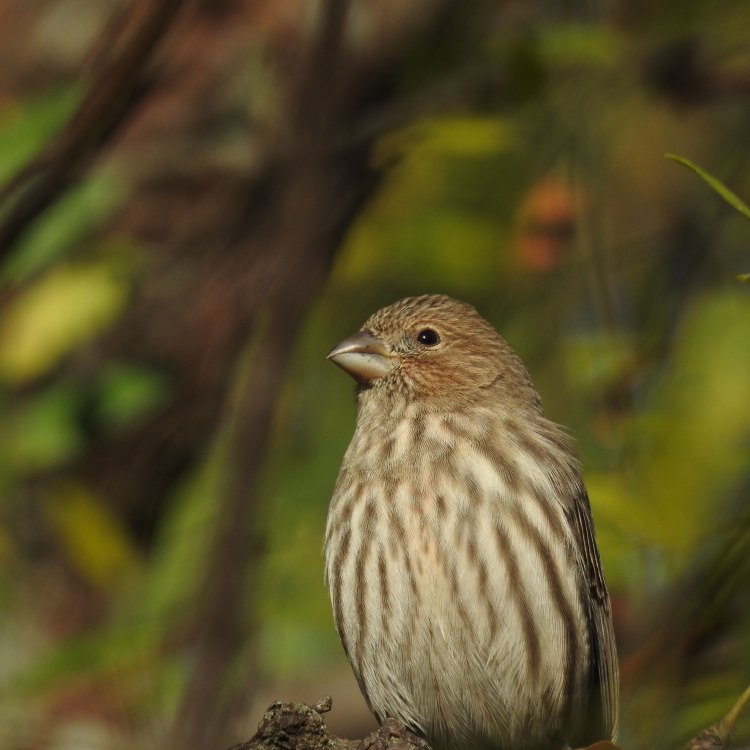
House Finch
- Adult Size: Small
- Average Lifespan: 2-8 years
- Reproduction: Monogamous
- Reproductive Behavior: Build cup-shaped nests, lay eggs
- Sound or Call: Vocal with varied songs and calls
- Migration Pattern: Some populations migrate, while others are resident
- Social Groups: Flock
- Behavior: Energetic and agile flyers
- Threats: Predation, diseases
- Conservation Status: Least Concern
- Impact on Ecosystem: Pollinators and seed dispersers
- Human Use: Can be kept as pets or used for bird-watching
- Distinctive Features: Bright red plumage on males, conical bill
- Interesting Facts: Native to western North America, but introduced to the eastern US
- Predator: Birds of prey, cats
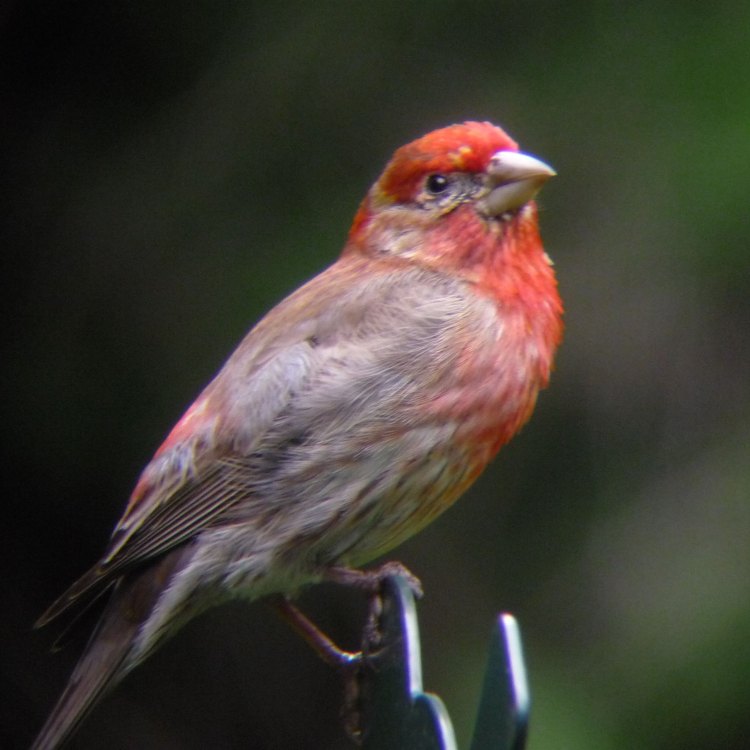
Haemorhous mexicanus
The Colorful World of House Finches: A Small but Mighty Bird
The world is full of colorful and unique creatures, each one with its own special features and abilities. One such creature is the House Finch (Haemorhous mexicanus), a small but mighty bird found in various parts of North America. With its bright red plumage, lively personality, and important role in the ecosystem, the House Finch has captured the hearts of bird enthusiasts and nature lovers alike.Let's take a closer look at this incredible bird and discover what makes it truly one of a kind PeaceOfAnimals.Com.
Size and Lifespan
The House Finch is relatively small in size, measuring only 12-16 centimeters (4.7-6.3 inches) in length and weighing around 16-27 grams (0.6-0.9 ounces). This makes them one of the smaller bird species found in North America.In the wild, House Finches have an average lifespan of 2-8 years. However, those kept as pets may live longer, up to 10 years or more. The lifespan of these birds depends on various factors, including predation, diseases, and human interference Horse.
Reproduction and Behavior
House Finches are monogamous birds, meaning they mate and reproduce with only one partner for their lifetime. These birds tend to make their nests in cup-shaped structures, which they build using twigs, grass, and other materials. The female will lay 3-5 eggs, which both the male and female take turns incubating for about two weeks.Once the eggs hatch, both parents are actively involved in caring for the young. The chicks are fed a diet of insects, seeds, and berries until they fledge and can fly on their own.
When it comes to behavior, House Finches are known for their energetic and agile flights, often darting through trees and shrubs in search of food. They are also social birds and can be found in flocks.
Calls and Sounds
House Finches are vocal birds, with a wide range of songs and calls. Male House Finches are particularly known for their beautiful and varied songs, which they use to attract mates and defend their territories. These songs can range from simple melodies to more complex and intricate tunes.Aside from their songs, House Finches also have a distinctive call, which is a short, sharp "cheep" sound that is often repeated in a series.
Migration Pattern
While some populations of House Finches are known to migrate, others are resident birds, meaning they do not migrate and stay in the same area all year round. The migration patterns of House Finches also seem to vary based on their location and the availability of food and resources.In western North America, where they are native, House Finches are largely resident birds. However, in the eastern parts of the United States, where they were introduced in the 1940s, some populations are known to migrate to more southern areas during the colder months.
Threats and Conservation Status
Like many other bird species, House Finches face various threats to their survival. One of the biggest threats is predation by birds of prey such as hawks and owls. Cats are also a common predator of House Finches, especially those that live in urban or suburban areas.In recent years, House Finches have also been affected by diseases like conjunctivitis, which causes swelling and redness in their eyes. These diseases can spread quickly among flocks, resulting in high mortality rates.
Despite these threats, the overall population of House Finches is considered to be stable, earning them a conservation status of "Least Concern" according to the International Union for Conservation of Nature (IUCN).
Impact on the Ecosystem and Human Interaction
Despite their small size, House Finches play a vital role in the ecosystem as pollinators and seed dispersers. Through their movements and feeding habits, these birds help in the reproduction and dispersal of various plant species.Aside from their ecological importance, House Finches are also popular among bird-watchers and bird enthusiasts. They can be kept as pets, although it is essential to ensure they are captive-bred and not taken from the wild. Watching these birds in their natural habitat is also a common activity, as they are easy to spot in backyards, parks, and other green spaces.
Distinctive Features and Interesting Facts
One of the most distinctive features of the House Finch is the bright red plumage of the males. This color develops due to the pigments in their diet, with males having a more vibrant red color, and females having a more muted, yellowish-orange plumage.Interestingly, House Finches are native to western North America, where they can be found in mountainous and desert regions. However, in the 1940s, a small number of these birds were introduced to the eastern United States, primarily for use in the pet trade. Today, they can be found throughout the eastern parts of the country, including in cities, suburbs, and rural areas.
In Conclusion
In conclusion, the House Finch may be small in size, but it is a remarkable and vital part of the North American ecosystem. Their bright plumage, lively personality, and important role in pollination and seed dispersal make them a beloved and valuable species. So the next time you hear a House Finch singing its heart out in your backyard, take a moment to appreciate this colorful and unique bird.
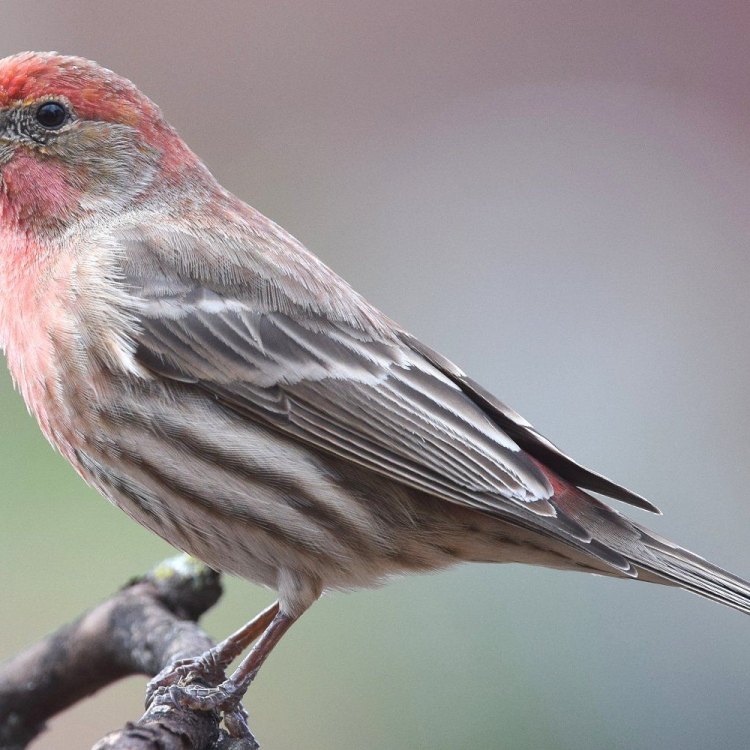
The Vibrant and Adaptable House Finch: A Common Bird in North America
Disclaimer: The content provided is for informational purposes only. We cannot guarantee the accuracy of the information on this page 100%. All information provided here may change without prior notice.

